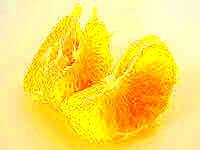結果
| 問題 | No.1265 Balloon Survival |
| コンテスト | |
| ユーザー |
 srjywrdnprkt srjywrdnprkt
|
| 提出日時 | 2023-12-23 00:06:52 |
| 言語 | C++17 (gcc 13.3.0 + boost 1.89.0) |
| 結果 |
AC
|
| 実行時間 | 75 ms / 2,000 ms |
| コード長 | 5,793 bytes |
| 記録 | |
| コンパイル時間 | 2,205 ms |
| コンパイル使用メモリ | 210,920 KB |
| 最終ジャッジ日時 | 2025-02-18 13:17:41 |
|
ジャッジサーバーID (参考情報) |
judge5 / judge2 |
(要ログイン)
| ファイルパターン | 結果 |
|---|---|
| sample | AC * 4 |
| other | AC * 32 |
ソースコード
#include <bits/stdc++.h>
using namespace std;
using ll = long long;
using ld = long double;
// vector OA = (x, y)
template <typename T>
struct vec{
T x, y;
vec (T xx=0, T yy=0) : x(xx), y(yy) {};
vec operator-() const {
return vec(-x, -y);
}
vec& operator+=(const vec &w) {
x += w.x; y += w.y;
return *this;
}
vec& operator-=(const vec &w) {
x -= w.x; y -= w.y;
return *this;
}
vec operator+(const vec &w) const {
vec res(*this);
return res += w;
}
vec operator-(const vec &w) const {
vec res(*this);
return res-=w;
}
vec operator*=(T a){
x *= a; y *= a;
return *this;
}
vec operator*(T a){
vec res(*this);
return res*=a;
}
pair<T, T> to_pair() {return {x, y};}
};
//Inner product of vectors v and w
template <typename T>
T dot(vec<T> v, vec<T> w){
return v.x * w.x + v.y * w.y;
}
//Outer product of vector v and w
template <typename T>
T outer(vec<T> v, vec<T> w){
return v.x * w.y - w.x * v.y;
}
template <typename T>
vec<T> normalize(vec<T> &a){
T x=a.x, y=a.y, g;
if (x == 0) return vec((T)0,y/abs(y));
else if (y == 0) return vec(x/abs(x), (T)0);
g = abs(gcd(x, y));
return vec(x/g, y/g);
}
//size of triangle ABC
template <typename T>
T heron(vec<T> &a, vec<T> &b, vec<T> &c){
return abs(outer(b-a, c-a)) / 2;
}
//size of polygon A1A2...An
template <typename T>
T area(vector<vec<T>> P){
int n=P.size();
T S=0;
for (int i=0; i<n; i++) S += outer(P[i], P[(i+1)%n]);
return abs(S)/2;
}
//Distance between point a and b
template <typename T>
T distance(vec<T> &a, vec<T> &b){
return dot(a-b, a-b);
}
//Manhattan distance between point a and b
template <typename T>
T manhattan(vec<T> &a, vec<T> &b){
return abs(a.x-b.x)+abs(a.y-b.y);
}
//Argument of complex
template <typename T>
T arg(vec<T> a){
complex<T> c(a.x, a.y);
T res = arg(c);
if (res < 0) res += M_PI*2;
return res;
}
//rotation around origin
template <typename T>
vec<T> rotate(vec<T> &a, T theta){
complex<T> c(a.x, a.y), p = polar((T)1, theta);
c *= p;
return vec(real(c), imag(c));
}
//Convex Hull(Smallest Convex set containing all given vecs)
//Grahum Scan (O(NlogN))
template <typename T>
vector<vec<T>> convex_hull(vector<vec<T>> P){
sort(P.begin(), P.end(), [](vec<T> &p1, vec<T> &p2) {
if (p1.x != p2.x) return p1.x < p2.x;
return p1.y < p2.y;
});
int N=P.size(), k=0, t;
vector<vec<T>> res(N*2);
for (int i=0; i<N; i++){
while(k > 1 && outer(res[k-1]-res[k-2], P[i]-res[k-1]) <= 0) k--;
res[k] = P[i];
k++;
}
t = k;
for (int i=N-2; i>=0; i--){
while(k > t && outer(res[k-1]-res[k-2], P[i]-res[k-1]) <= 0) k--;
res[k] = P[i];
k++;
}
res.resize(k-1);
return res;
}
//Sorting by argument(O(NlogN))
template <typename T>
void arg_sort(vector<vec<T>> &P){
int N=P.size();
vector<vec<T>> U, L;
for (int i=0; i<N; i++){
if (P[i].y > 0) U.push_back(P[i]);
else if (P[i].y < 0) L.push_back(P[i]);
else{
assert (P[i].x != 0);
if (P[i].x > 0) U.push_back(P[i]);
else L.push_back(P[i]);
}
}
auto key=[](vec<T> const &a, vec<T> const &b)->bool{ return outer(a, b) > 0;};
sort(U.begin(), U.end(), key);
sort(L.begin(), L.end(), key);
P = U;
for (auto &x : L) P.push_back(x);
}
//judge if segment AB intersects segment CD
template <typename T>
bool intersect(vec<T> &a, vec<T> &b, vec<T> &c, vec<T> &d){
T s, t;
s = outer(b-a, c-a);
t = outer(b-a, d-a);
if (s == 0 && t == 0){
if (max(a.x, b.x)<min(c.x, d.x) || max(a.y, b.y)<min(c.y, d.y) || min(a.x, b.x)>max(c.x, d.x) || min(a.y, b.y)>max(c.y, d.y)) return 0;
else return 1;
}
if ((s > 0 && t > 0) || (s < 0 && t < 0)) return 0;
s = outer(d-c, a-c);
t = outer(d-c, b-c);
if ((s > 0 && t > 0) || (s < 0 && t < 0)) return 0;
return 1;
}
//straight line
template <typename T>
struct line{
//ax+by+c=0
T a, b, c;
// Ax+By+C=0
line (T A=0, T B=0, T C=0) : a(A), b(B), c(C) {};
// line passing through p and q
line (vec<T> &p, vec<T> &q) {a = (q.y-p.y); b = (p.x-q.x); c = -p.x*q.y + p.y*q.x;};
T slope() {return (b == 0 ? numeric_limits<T>::infinity() : -a/b);}
T intercept() {return (b == 0 ? numeric_limits<T>::infinity() : -c/b);}
};
//Intersection of straight lines p and q
template <typename T>
vec<T> intersection(line<T> &p, line<T> &q){
T coef = - (T)1/(p.a*q.b-q.a*p.b), x, y;
x = (q.b*p.c-p.b*q.c) * coef;
y = (-q.a*p.c+p.a*q.c) * coef;
return vec(x, y);
}
//distance between line PQ and point R
template <typename T>
T dist_line_point(vec<T> &p, vec<T> &q, vec<T> &r){
// ax+by+c=0
T a = (q.y-p.y), b = (p.x-q.x), c = -p.x*q.y + p.y*q.x;
return abs(a*r.x+b*r.y-c) / sqrt(a*a+b*b);
};
int main(){
cin.tie(nullptr);
ios_base::sync_with_stdio(false);
ll N, ans=0;
ll x, y, d;
cin >> N;
vector<vec<ll>> p(N);
for (int i=0; i<N; i++){
cin >> x >> y;
p[i] = vec(x, y);
}
vector<tuple<ll, ll, ll>> v;
for (int i=0; i<N; i++){
for (int j=i+1; j<N; j++){
v.push_back({distance(p[i], p[j]), i, j});
}
}
sort(v.begin(), v.end());
unordered_set<ll> st;
for (int i=1; i<N; i++) st.insert(i);
for (auto [d, i, j] : v){
if (i == 0 && st.count(j)){
ans++;
st.erase(j);
}
if (st.count(i) && st.count(j)){
st.erase(i);
st.erase(j);
}
}
cout << ans << endl;
return 0;
}
